Archaeology
-
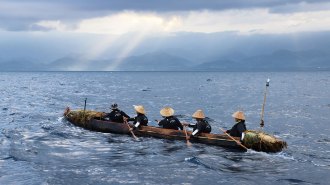 Humans
HumansAncient humans may have deliberately voyaged to Japan’s Ryukyu Islands
Satellite-tracked buoys suggest that long ago, a remote Japanese archipelago was reached by explorers on purpose, not accidentally.
-
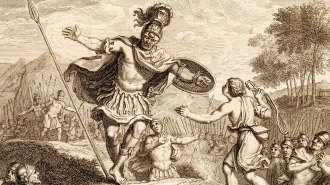 Archaeology
ArchaeologyThe biblical warrior Goliath may not have been so giant after all
Archaeological finds suggest the width of the walls of Goliath’s home city were used to metaphorically represent the Old Testament figure’s height.
By Bruce Bower -
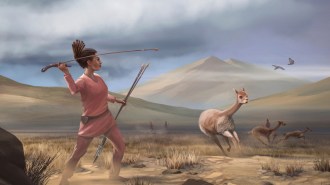 Anthropology
AnthropologyFemale big-game hunters may have been surprisingly common in the ancient Americas
A Peruvian burial that indicates that women speared large prey as early as 9,000 years ago sheds new light on gender roles of ancient hunter-gatherers.
By Bruce Bower -
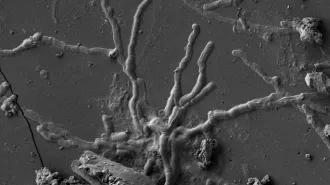 Anthropology
AnthropologyThese human nerve cell tendrils turned to glass nearly 2,000 years ago
Part of a young man’s brain was preserved in A.D. 79 by hot ash from Mount Vesuvius’ eruption.
-
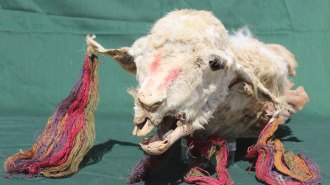 Anthropology
AnthropologyMummified llamas yield new insights into Inca ritual sacrifices
Bound and decorated llamas, found at an Inca site in southern Peru, may have been buried alive as part of events in annexed territories.
By Bruce Bower -
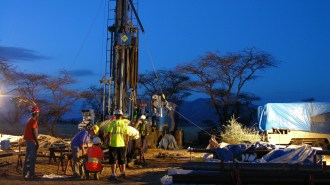 Anthropology
AnthropologyHow environmental changes may have helped make ancient humans more adaptable
An East African sediment core unveils ecological changes underlying a key Stone Age transition.
By Bruce Bower -
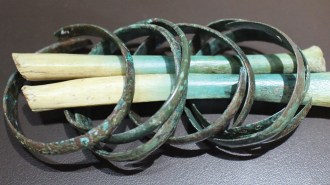 Archaeology
ArchaeologyBones from an Iron Age massacre paint a violent picture of prehistoric Europe
Bones left unburied, and in one case still wearing jewelry, after a massacre add to evidence that prehistoric Europe was a violent place.
-
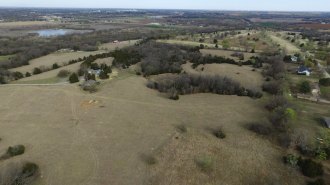 Humans
HumansDrones find signs of a Native American ‘Great Settlement’ beneath a Kansas pasture
An earthwork buried under a cattle ranch may be part of one of the largest Native American settlements ever established north of Mexico.
By Bruce Bower -
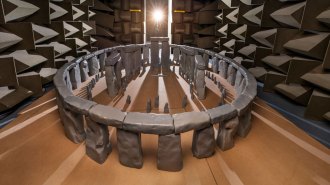 Archaeology
ArchaeologyStonehenge enhanced sounds like voices or music for people inside the monument
Scientists created a scale model one-twelfth the size of the ancient stone circle to study its acoustics.
By Bruce Bower -
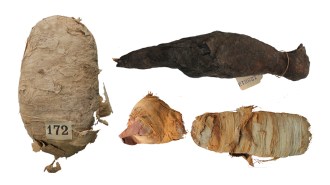 Archaeology
ArchaeologyX-rays reveal what ancient animal mummies keep under wraps
A new method of 3-D scanning mummified animals reveals life and death details for a snake, a bird and a cat.
-
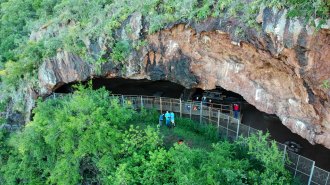 Archaeology
ArchaeologyThe oldest known grass beds from 200,000 years ago included insect repellents
Found in South Africa, 200,000-year-old bedding remnants included fossilized grass, bug-repelling ash and once aromatic camphor leaves.
By Bruce Bower -
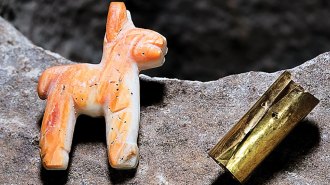 Archaeology
ArchaeologyA submerged Inca offering hints at Lake Titicaca’s sacred role
Divers found a stone box holding a figurine and a gold item, highlighting Lake Titicaca’s sacred status to the Inca.
By Bruce Bower